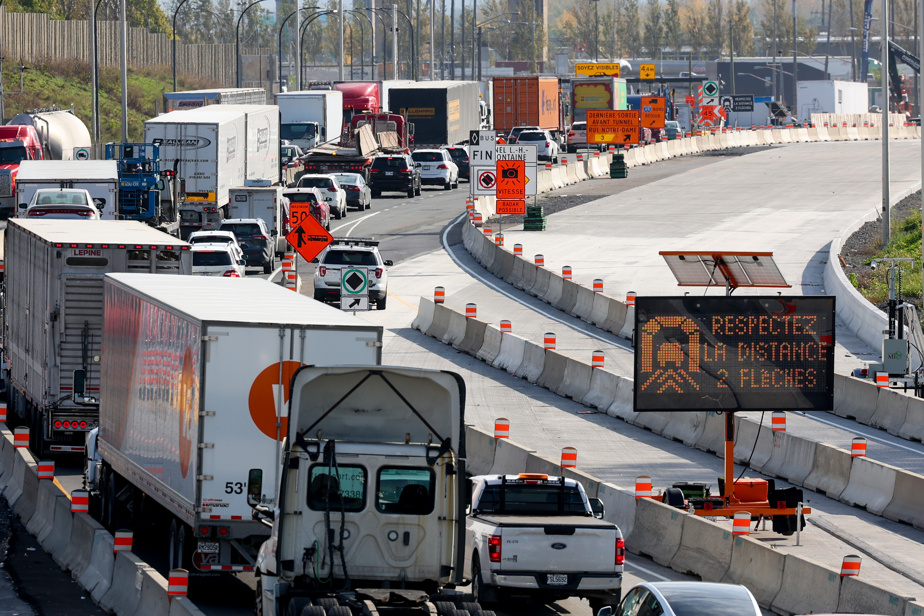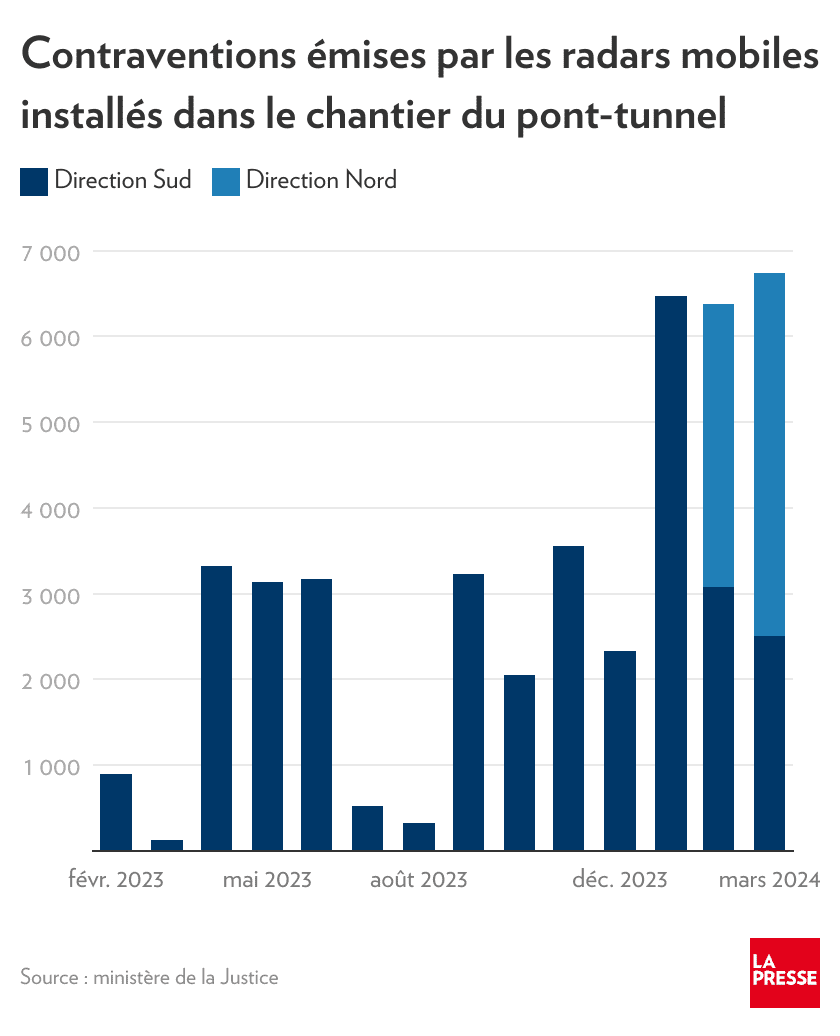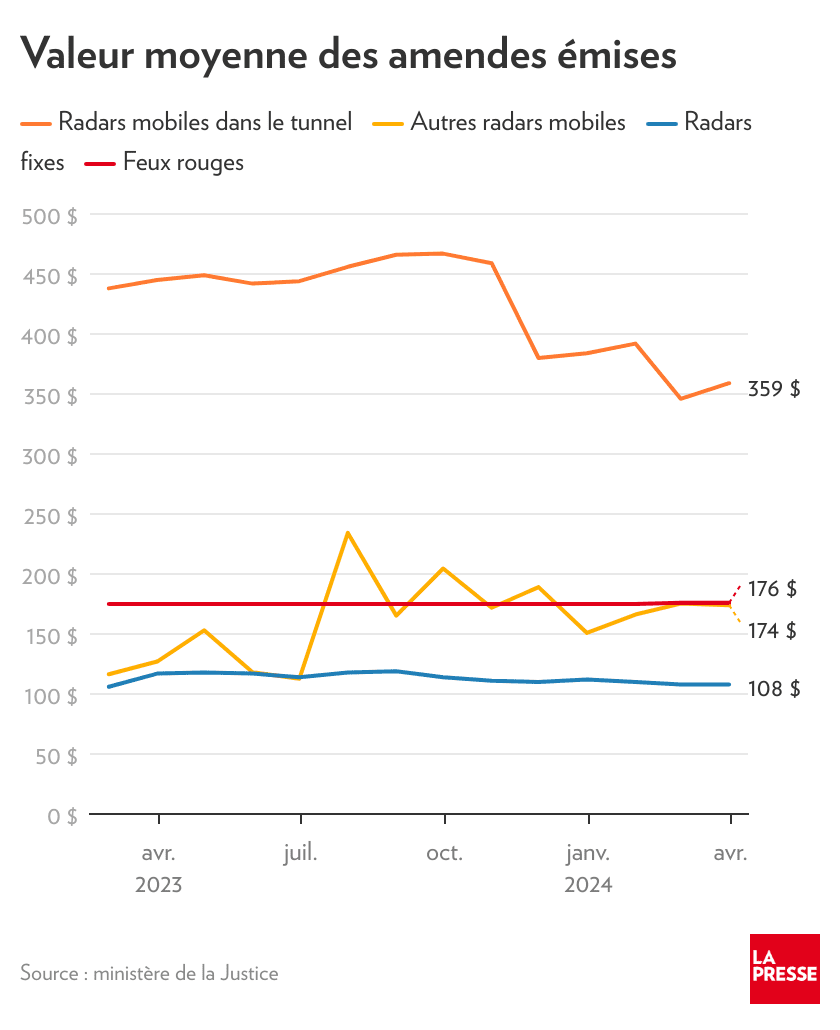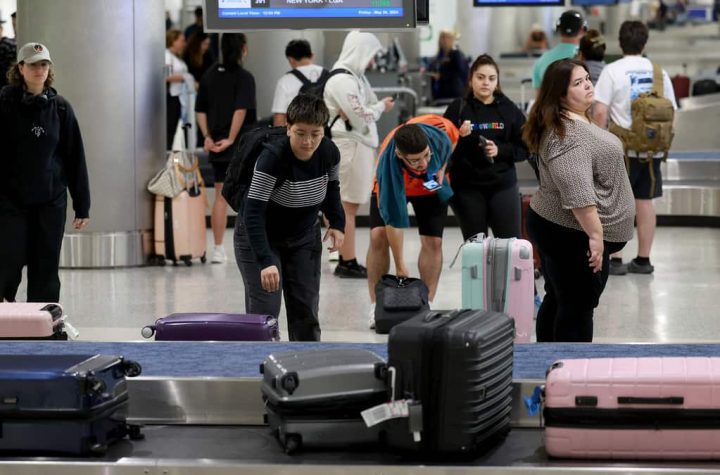
The addition of a second mobile photo radar at the Louis-Hippolyte-La Fontaine bridge-tunnel doubled the number of fines issued at this location. But even after a year since this surveillance measure came into force, the number of accidents around the mega construction site is still increasing.
In March alone, more than 6,700 fines were issued by devices installed at the A25 mega-construction site, totaling 2.4 million. Most of these fines were dispensed by a new device added to the north side last winter.
The toll is significantly higher than last fall, when an average of just under 3,000 motorists were fined each month. At the time, only one device monitored traffic on the site, heading south towards Longueuil.
You should know that in the past year, the Louis-Hippolyte-La Fontaine bridge-tunnel construction site has become a very profitable field for photo radars. No fewer than 42,214 motorists have been ticketed at this location since February 2023, out of a total of 17 million, data from the Ministry of Justice revealed.

Despite increased surveillance with photo radar, the number of accidents is not decreasing.
In the first three months of 2024, the Ministry of Transport and Sustainable Mobility (MTMD) recorded 34 accidents in both directions on Highway 25, for the sector between the Beaubien exit on the Montreal side and the entrance or exit of the tunnel.
By early 2023, the ministry said Press There are around “twenty collisions” for the period of January and February, but this only involves the south direction. However, this is a significant increase from one year to another. “When there is no traffic in the evening, people go very fast. And because there are workers 24 hours a day, seven days a week, there are a lot of safety issues,” explained MTMD spokesperson Gilles Payer.
Speed drop
The presence of devices is affecting the speed of motorists. In fact, the average value of fines imposed has decreased significantly in recent months. In March, the average fine was $359. This is significantly lower than in 2023, when the average reached $440.
Although the speed problem in the tunnel is more severe, the decrease in the average fine indicates that motorists are taking their foot off the pedal more and more.
At the Sûreté du Québec (SQ), we are pleased that photo radar is helping to change behaviour. “The aim is to precisely modify the behavior of motorists so that they reduce their speed, so if it has an effect in that sense it is right. Putting the human resources to achieve this goal would have been difficult to achieve, if not impossible,” explained SQ spokesperson Ann Mathew.
Fines issued by A25 construction site radars are significantly higher than other mobile devices, with an average fine of $174. The reason is twofold: the speed during work on this motorway sector is reduced from 70 to 50 km/h and the amount of fines in the construction zone doubles.

More radars, more impact?
Last autumn, at the unveiling of the National Road Safety Strategy, Transport Minister, Genevieve Guilbault, announced that she wanted to rely more heavily on photo radars to slow traffic. Since then, the minister has set a target: to reach 250 photo radars by 2028.
“This is an effective and proven way to improve safety on our roads and discourage reckless behaviour, particularly in some high-risk areas and where police work cannot be carried out safely, such as the La Fontaine Tunnel,” it said. Minister's Office
Quebec recalled that it had already called for interests to “receive information on the best technologies available in the world.”
According to our information, the government is considering purchasing advanced radars that can photograph a car at two points on the road and then calculate its average speed based on the time it takes to move between the two. This prevents cars from slowing down until they approach a speed camera and then speed off again.
So far, Quebec has about fifty photo radars: 30 fixed and more than 20 mobile. The latter are specifically placed in school or “risk-prone” zones. In Montreal, only ten radars are in use, while Toronto, for comparison, already has 75. Montreal demanded in February that it be able to regain control of the radars in order to determine their number and location.
With Pierre-André Normandin, Press
The story so far
October 31, 2022: Three of the six lanes of the Louis-Hippolyte-La Fontaine Bridge-Tunnel are closed for several years until 2025-2026.
January 2023: Concerned about the speed of motorists on the construction site, Quebec installed a photo radar on the southbound construction site.
March 2023: Just established, photo radar became the most profitable in Quebec.
January 2024: The Department for Transport is adding another northbound photo radar, which will help double the number of fines issued to road users.
Learn more
-
- 75 million
- Photo radars brought in nearly $75 million in 2023, significantly more than the $63 million raised in 2022. In the first three months of 2024, they earned about $21.5 million in Quebec government coffers, of which 7.2 million came from Louis. -Hippolyte-La Fontaine Bridge-Tunnel.
Ministry of Law




